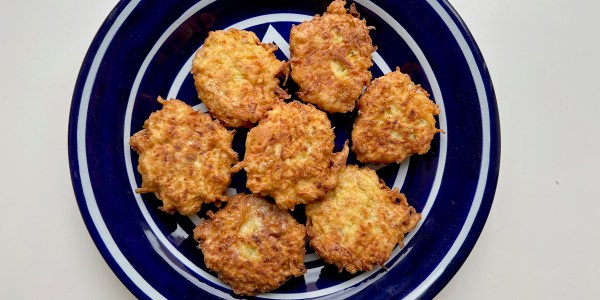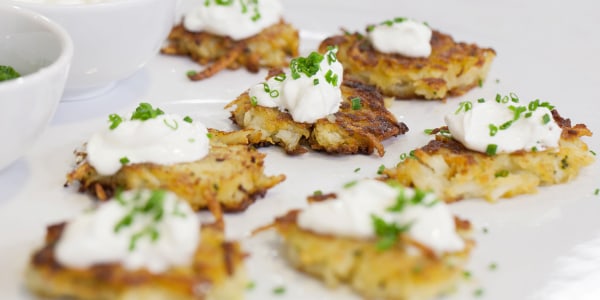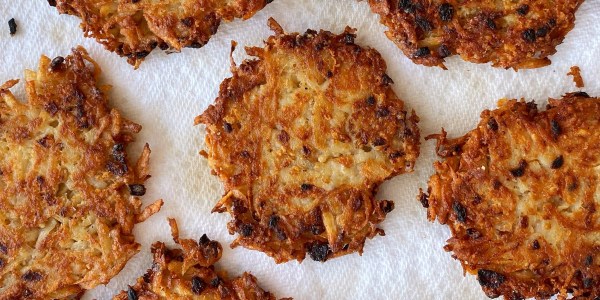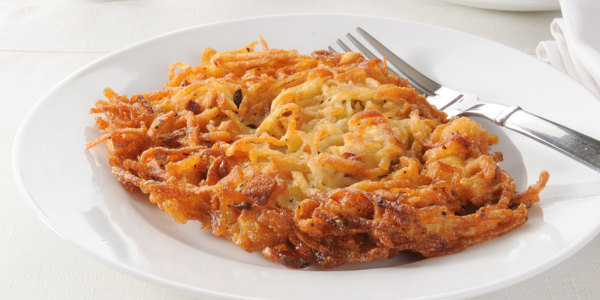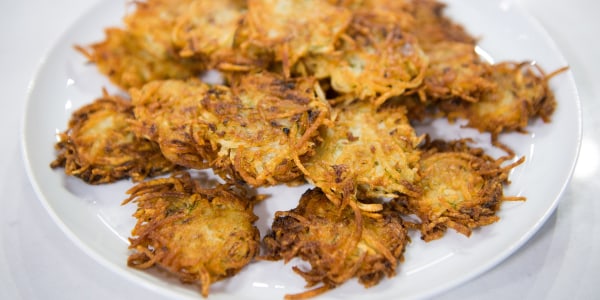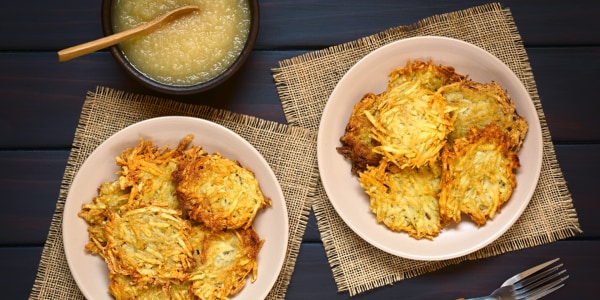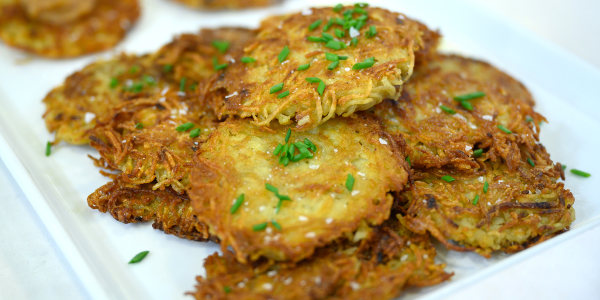Nothing signifies Hanukkah more than the smell of latkes frying to a golden crisp. But for all their perfection as a hot holiday treat to eat, making them can often feel intimidating. As with any tradition that dates back hundreds of years, there are endless opinions about what makes the perfect latke and plenty of pratfalls that can ruin them. But there’s more than one way to fry a latke, and depending on how much time you have on hand, there are a few different elements to consider in order to get that perfect balance between fluffy interior and crispy exterior.
Pick your potatoes wisely
The essence of a potato latke is of course … potatoes! The best potatoes for frying are the varietals that have the highest starch content, leading to crispy latkes that hold together. Russet is usually the top choice, but Idaho, Yukon Gold or other starchy choices also make the cut. But most potatoes will work fine in a pinch — sweet potatoes are even a great alternative if you want to mix it up a bit.
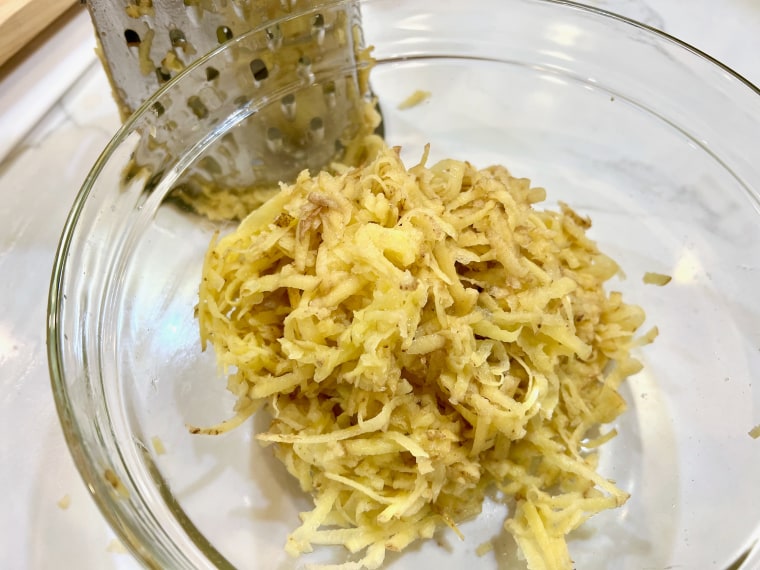
Squeeze all the water out
You can grate the potatoes in a food processor if you want to save time, but I think the box grater is the best bet for achieving the best texture. The most important step is — no matter what potato you use — to squeeze all the excess water out. Whenever you think you’re done, keep squeezing! The less water the better your latkes.
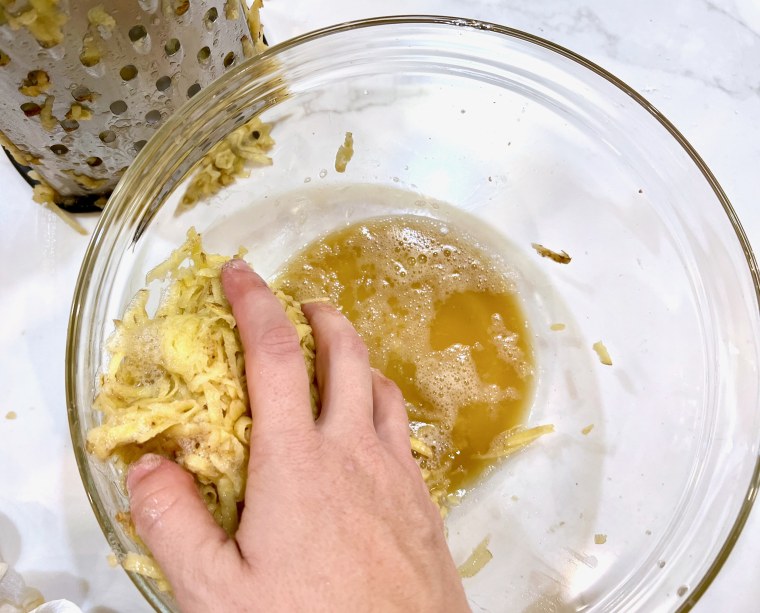
Add in your binding agents
Besides potatoes, there are a few other key ingredients to mix in. Eggs show up in every recipe as the glue to hold the latkes together. Usually there is also some type of flour or matzo meal to give another element to fry. To add a bit more flavor and texture, some recipes also include grated onions.
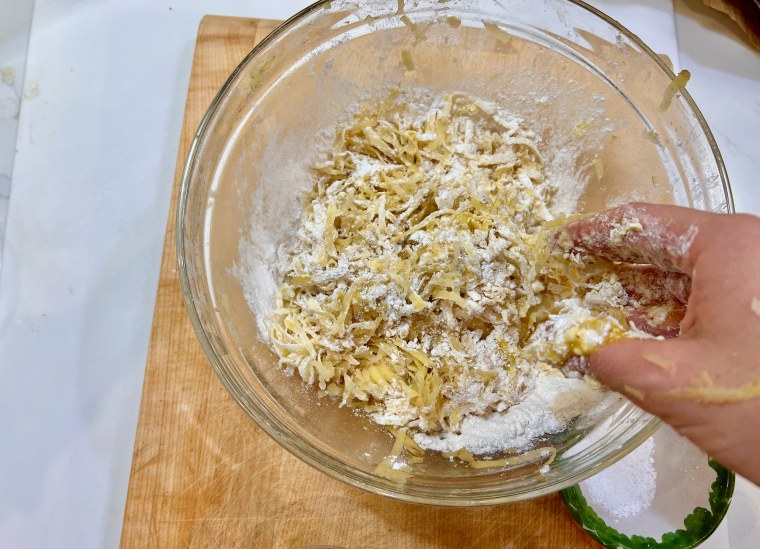
Fry in an oil with a high smoke point
The last ingredient is always the most essential: the oil or fat. Vegetable oil or canola oil is usually best, because of its high smoking point. Latkes were traditionally made with schmaltz, or chicken fat, so if you have access to it, you should certainly add it in, because it does contribute to the flavor.
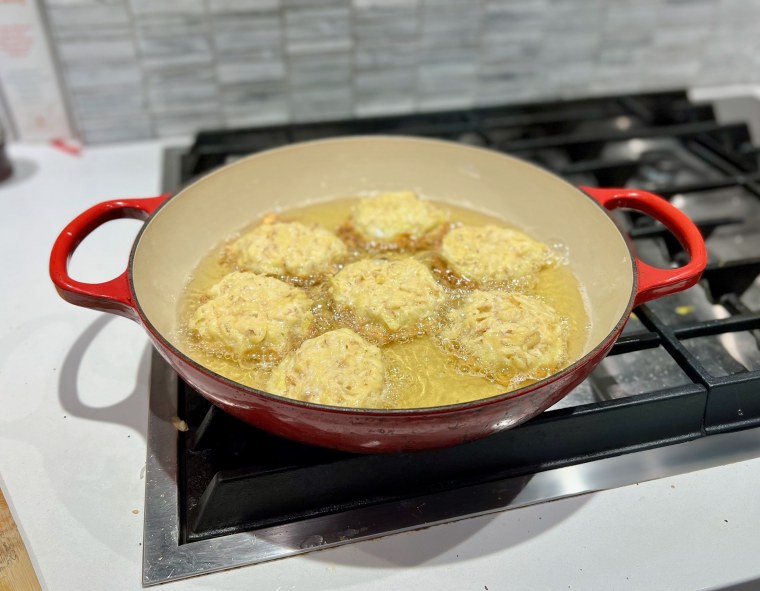
There's no limit to latke toppings
A fresh hot latke right out of the oil doesn’t need any additions, but there are certainly ways to add more to an already great dish. The most traditional garnishes are applesauce or sour cream — both can be dolloped on top or used as a dip. You can spice up both classics, either by adding ingredients like cinnamon or cloves to your applesauce, or chives and garlic to the sour cream. Oftentimes, you’ll also see smoked salmon paired with latkes. As easy as potatoes are for bases to riff on with mashed potatoes or baked potatoes, the same can be said with latkes.
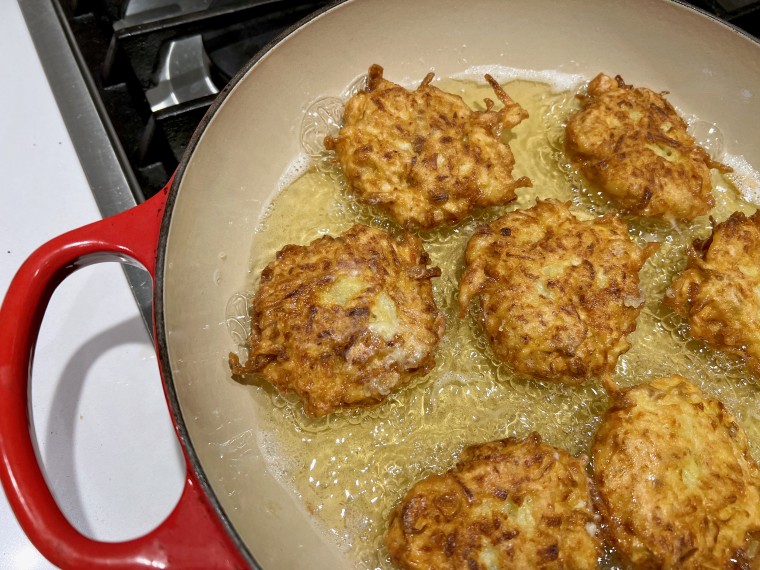
Time-saving shortcuts
The only drawback to making latkes can be their time-consuming preparation. There will always be purists, but when it comes to those in a time crunch, it is OK to take a few shortcuts to ensure you get some latkes on the table.
The biggest time-saver is to buy pre-shredded potatoes. Make sure they are defrosted and try to squeeze out as much water as you can (as you would with regular potatoes). But you’ll save the time consuming peeling and grating portion of the recipe.
Get the recipe:
The simplest shortcut is to use self-rising flour — much easier to measure one item than tracking down multiple ingredients.
The other shortcut I swear by is to not peel the potatoes. We are happy to eat potato skins in other recipes so there’s no reason to not do the same here. It will buy you back precious time without anyone noticing it in the end result.
But the most important thing is to make sure you have latkes, so any shortcut you can take to make sure it happens is worthwhile.
